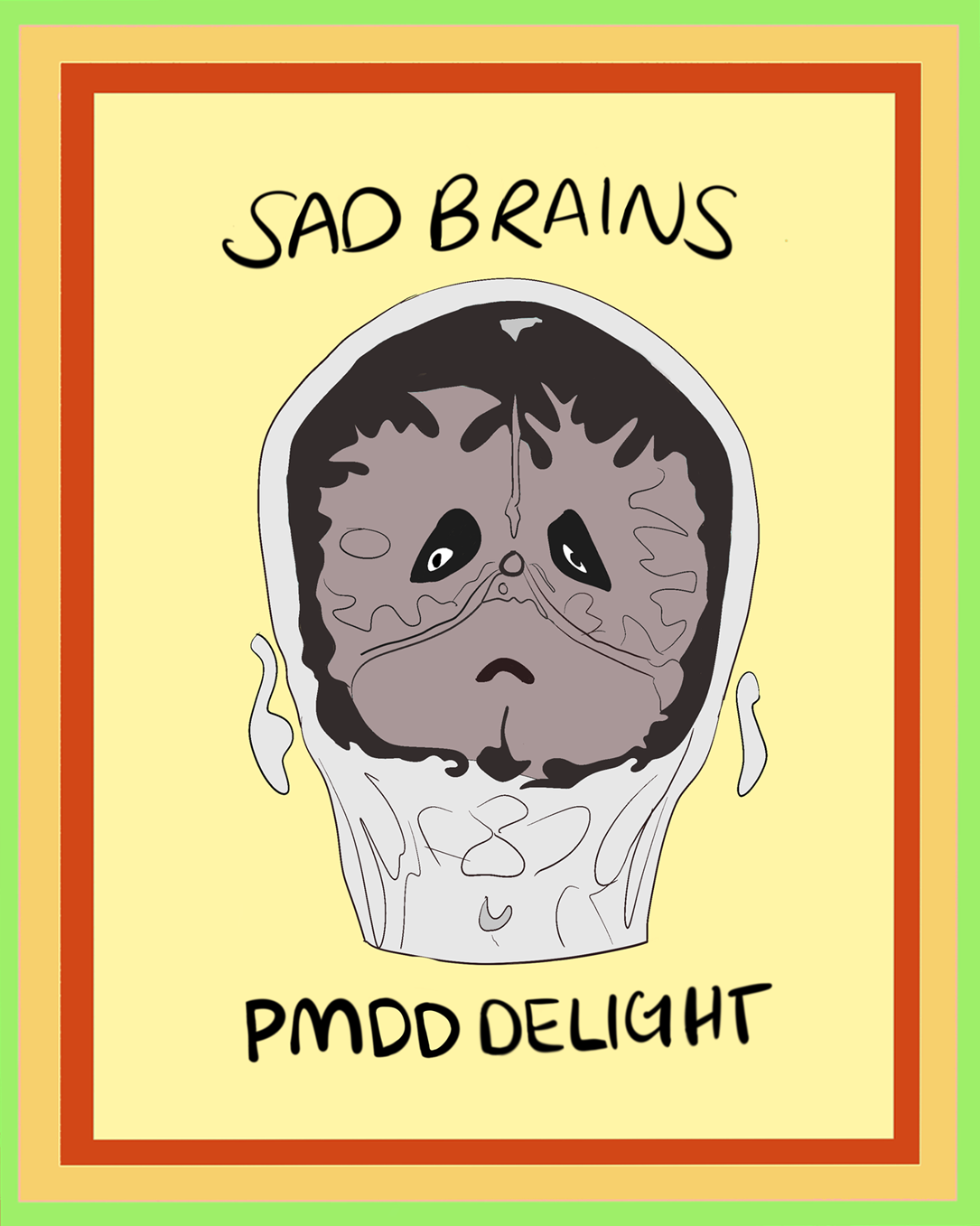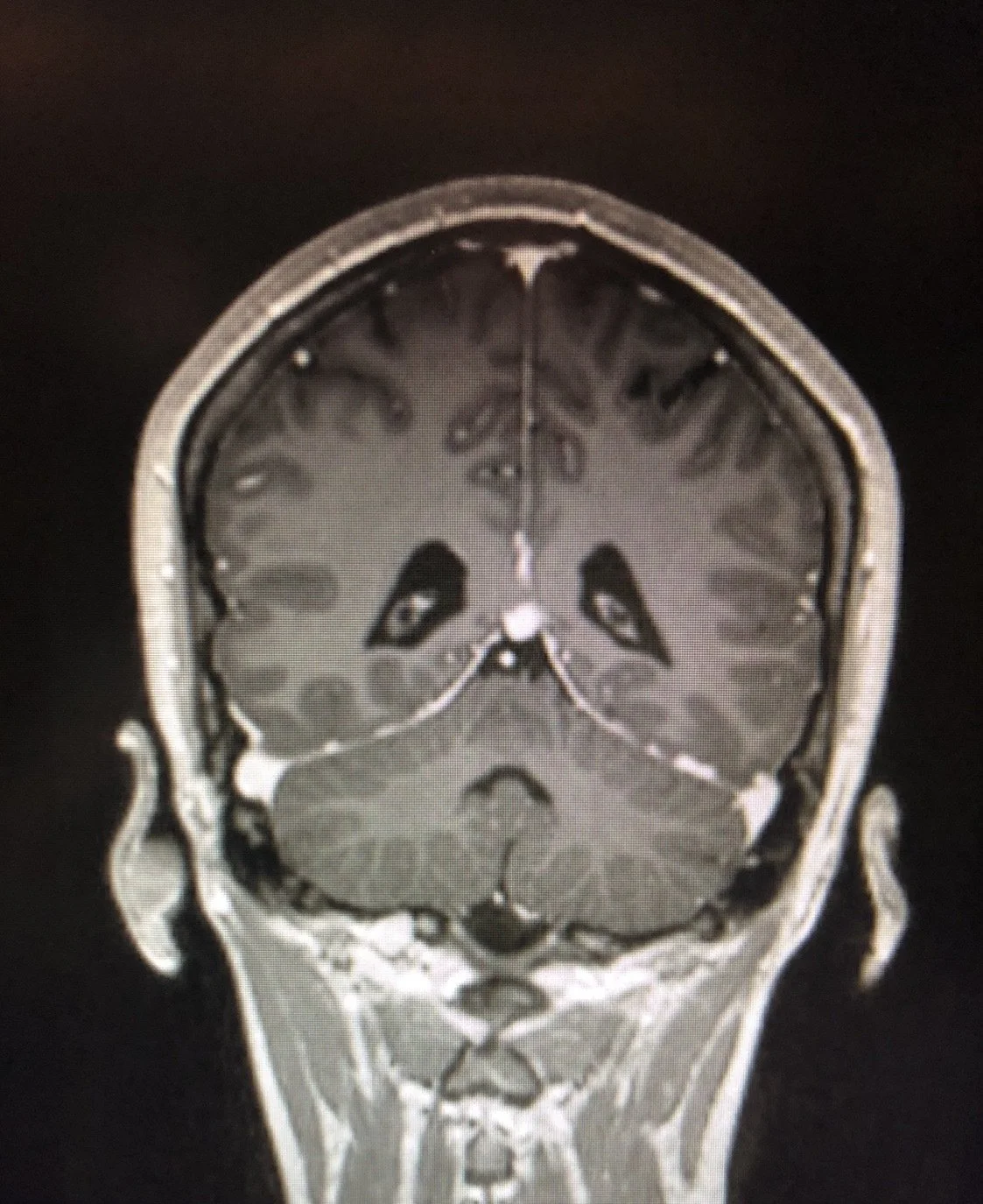Sad Brains, PMDD Delight


Imagine yourself driving a car. You feel in complete control. You feel confident that if something happens, you can navigate your way out of it. You’ve done it before and you’ll do it again. That is, until you’re taken hostage, shoved in the trunk, and the kidnapper starts driving the car 100 mph with no regard for anything, or anyone around you. That’s how PMDD feels.
PMDD is the deepest, darkest hole of depression that feels like there’s truly no escape. PMDD is a rage that you didn’t even know you had inside you, showing up completely uninvited over something you normally wouldn’t think twice about. PMDD is your worst anxiety, amplified a hundredfold. PMDD is being mean to people who love and care about you, even when you REALLY don’t mean to. It’s disruption on every level of your being. Your emotions become completely out of control and there’s no way of grasping the steering wheel. Not to mention, the extreme physical side effects, bloating up to 10 pounds in a day, breast tenderness and swelling, migraines, sleep problems, changes in appetite, etc. It’s a real nightmare.
Before getting PMDD under control, it’s easy to do a lot of damage around you. While articles may describe it as a more severe form of PMS, the experience is more similar to being bipolar for part of the month. Bipolar disorder is characterized by episodes of depression and mania, and like PMDD, is a disorder that tends to “cycle” between mood states. Although I do not have bipolar myself, it is a common comorbidity.
Luckily, with some really good medications/supplements, and after practicing a whole lot of CBT (cognitive behavioral therapy), I finally feel I have control over these emotional periods. While it can still be difficult, now it’s more like being a passenger who can fight the kidnapper and take back the wheel.
Now, to the art. I originally made this piece for Jordan Jensen of Bein Ian with Jordan. I had never heard anyone talk openly about PMDD. I felt very alone with how severe and out of control my emotional shifts were on a monthly basis, so when one of the best comedians out there today mentioned she also had it too, I couldn’t help but make her a sticker for it.
I made this piece using my own MRI scans that still crack me up to this day (swipe to see). Last year after some testing, I noticed this one image which looks like a sad little man in my brain. I blame him for my depression lmao. At least he’s cute. Sad Brains is my play on Bad Brains, who helped pioneer hardcore punk…something that also helps during these unhinged moments.
Read more about the diagnosis below, as well as what has been helpful for me.
From the NIH —
Currently, PMDD is listed in the Diagnostic and Statistical Manual of Mental Disorders, 5th Edition (DSM-5) as a separate entity under Depressive disorders, with the criteria for diagnosis as follows:
Criterion A - At least 5 of the following 11 symptoms (including at least 1 of the first 4 listed) should be present:
Markedly depressed mood, feelings of hopelessness, or self-deprecating thoughts
Marked anxiety, tension, feelings of being “keyed up” or “on edge”
Marked affective lability
Persistent and marked anger or irritability or increased interpersonal conflicts
Decreased interest in usual activities (eg, work, school, friends, and hobbies)
Subjective sense of difficulty in concentrating
Lethargy, easy fatigability, or marked lack of energy
Marked change in appetite, overeating, or specific food cravings
Hypersomnia or insomnia
A subjective sense of being overwhelmed or out of control
Other physical symptoms, such as breast tenderness or swelling, headaches, joint or muscle pain, a sensation of bloating, or weight gain.
Criterion B - symptoms severe enough to interfere significantly with social, occupational, sexual, or scholastic functioning.
Criterion C - symptoms discretely related to the menstrual cycle and must not merely represent an exacerbation of the symptoms of another disorder, such as major depressive disorder, panic disorder, dysthymic disorder, or a personality disorder (although the symptoms may be superimposed on those of these disorders).
Criterion D - criteria A, B, and C are confirmed by prospective daily ratings during at least 2 consecutive symptomatic menstrual cycles. The diagnosis may be made provisionally before this confirmation.
Women with moderate-to-severe PMS or PMDD experience more quality-of-life detriments and work-productivity losses and incur greater healthcare costs than women with no or only mild symptoms.[2]
I experience all of these symptoms on a monthly basis, but after years of working to find the right solution for myself, I feel more balanced than ever going through my cycle.
For most women, an SSRI such as Lexapro or Prozac (taken either daily, or after ovulation until menstruation), can seriously relieve the symptoms of PMDD. I tried both of those medications and while helpful in a lot of ways, my body did not agree with them. Lexapro made me extremely sick to my stomach, and I experienced some seizure-like activity on Prozac.
When the traditional medications didn’t work for me, I worked with my naturopath to find the right combo of supplements for me. Supplements that have helped my mood-related PMDD symptoms are SAMe, neurocalm, MacaHarmony, and saffron. For the physical side effects, pycnogenol has helped my bloating, acne, and pain from endometriosis.
If you think you may have PMDD, please speak with a doctor. Your primary care physician, gynecologist, or naturopath can help you figure out the best medications or supplements for you. Also, I’d recommend trying CBT. You can find a cognitive behavioral therapist around you using psychology today, or by asking your primary care for a referral. CBT teaches you tools that help calm both your mind and body, which in return helps you in navigating difficult emotional situations. Learn more about CBT and how it may help you.
I will discuss PMDD in more detail in my podcast, Thank You So Much for Asking.